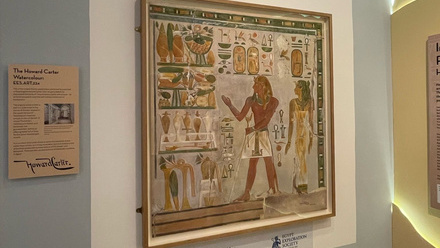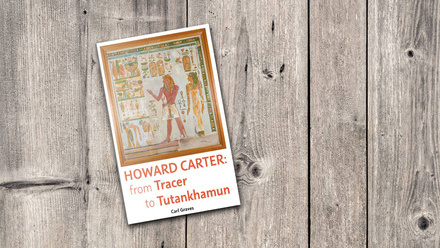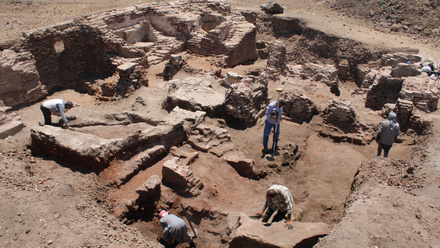Temples in Ancient Egypt
What were temples for?
Egyptian temples were sacred places where priests served the gods. A temple was a house for the one or more deities it was dedicated to. Gods were believed to live within their statues in the temple’s shrine.
Temples were where cultural knowledge was stored and curated. Each temple had a library of ritual papyri. Major temples had a ‘House of Life’ where such texts were compiled and copied.
Temples were designed to reflect and maintain the universe. Their decoration presents a cross-section of the world as the Egyptians understood it. The lower sections of walls and columns are carved with plant motifs, the middle sections show the king conducting rituals and worshipping the gods, and the ceilings were covered in stars and constellations.
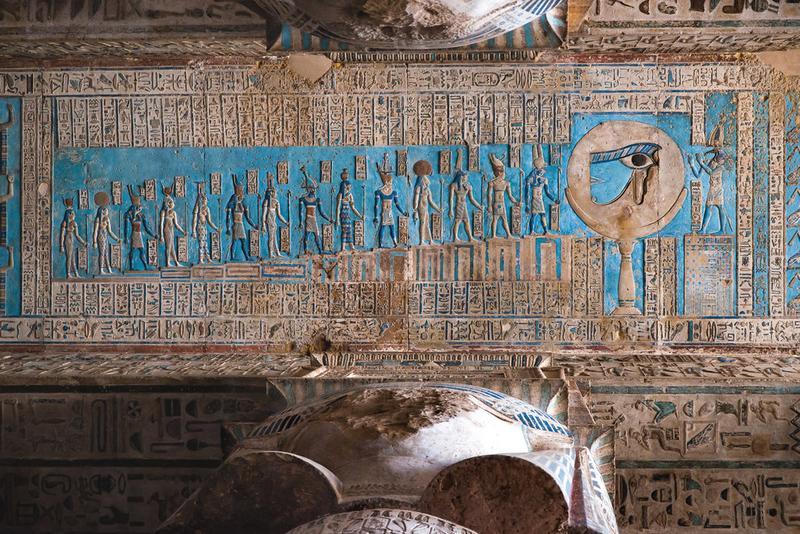
The ceiling of the hypostyle hall in the temple of Hathor at Dendera, depicting constellations and astronomical details.
Temples were also powerful economic institutions. Their estates controlled huge amounts of land and wealth. Many temple complexes would have looked like small towns, with the temple itself surrounded by workshops, storage areas, and living quarters for on-duty staff.
Architecture and symbolism
Temples continuously evolved over Egyptian history. They developed from smaller structures built of organic materials into large stone monuments. No two temples are the same, but most surviving examples share a similar set of features:
The pylon is a monumental gate formed of two towers joined by a central doorway. It probably symbolises the horizon, since it resembles the horizon hieroglyph and the doorway is sometimes decorated with solar imagery. The exterior of the pylon was decorated with flagpoles and images of the king smiting his enemies. Smiting scenes communicated the power of the Pharaoh while repelling chaotic forces away from the temple.
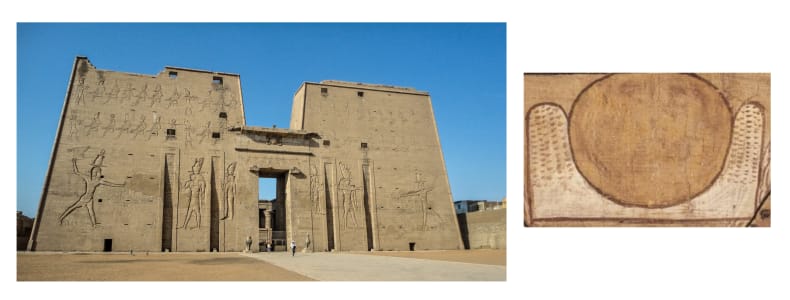
Left: the pylon of the temple of Horus at Edfu, with four recesses for flagpoles. Right: the horizon (akhet) hieroglyph, depicting a sun disk between two hills.
The open court follows the pylon and is where certain festivals and ritual activities took place. This may be as far as non-priests were allowed to enter.
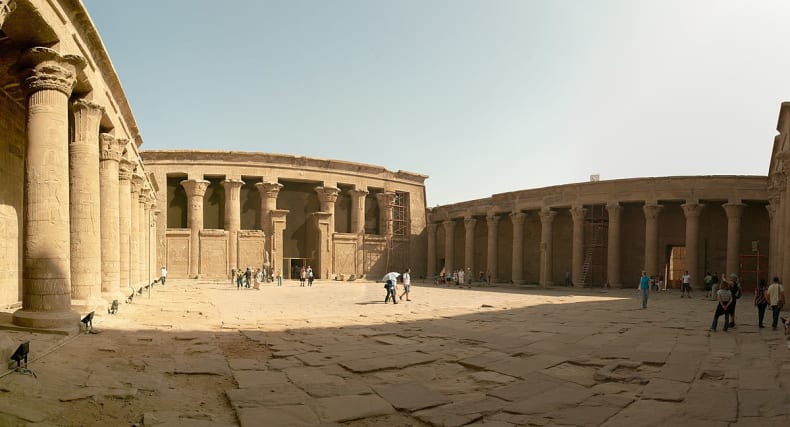
The open court at Edfu.
Between the open court and the inner sanctuary is the hypostyle hall, a roofed space filled with columns which are often shaped like papyrus plants. These columns might evoke the mythological marshes said to surround the ‘mound of creation’, the first land to rise from the primordial waters at the beginning of time.
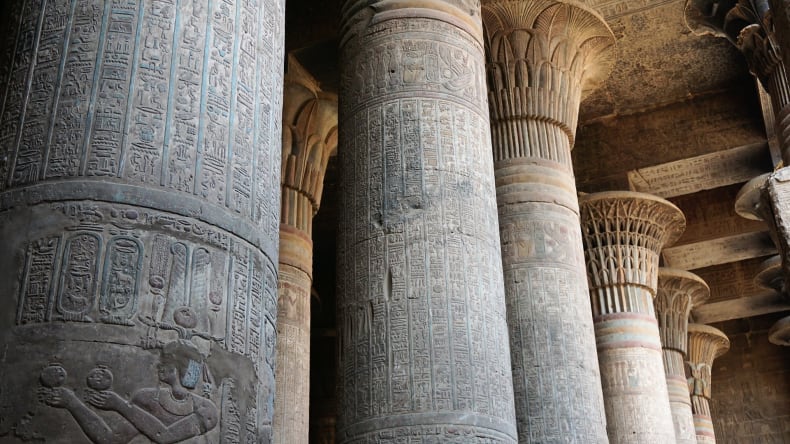
The hypostyle hall in the temple of Khnum at Esna.
The sanctuary contained the shrine that housed the deity’s statue. This was the darkest, most enclosed part of the temple, with the highest floor level. These conditions protected the god’s statue while also recreating the mound of creation, on which the temple’s god or goddess now stands.
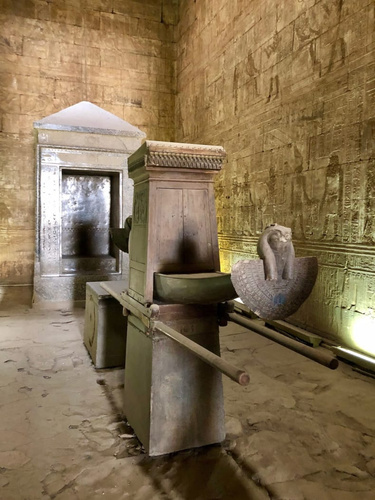
Inside the sanctuary at Edfu.
Many temples had a sacred lake where the priests bathed so they would be pure for serving the deity.
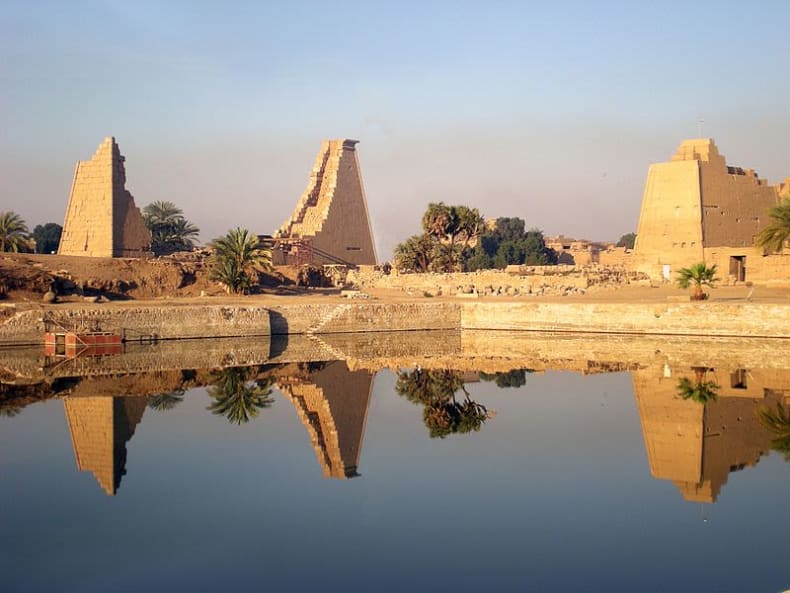
The sacred lake at Karnak.
Rituals
Each temple had its own rituals and festivals, but common to all was the ‘daily ritual’ in which the divine statue was ‘woken up’, fed, and dressed. We can reconstruct the ritual from texts and scenes that record it.
The high priest, acting on behalf of the Pharaoh, opened the shrine in the morning and greeted the statue with bowing and hymns. Incense was lit and the statue was brought out to be dressed in fine textiles and jewellery. After being presented with a selection of food offerings piled outside the sanctuary, the statue was returned to its shrine. The priest then left the room, sweeping away any footprints in the process. The leftover offerings were divided among the priests as part of their wages.
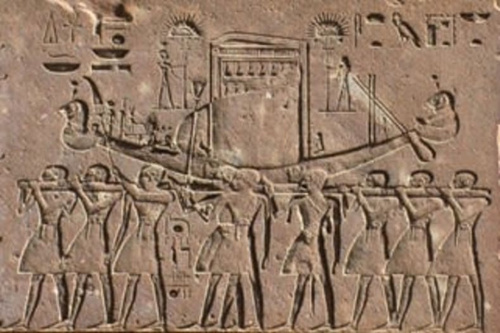
Depiction of priests carrying the sacred barque of Amun-Ra (Red Chapel of Hatshepsut, Karnak).
Festivals were another important aspect of temple ritual. Priests carried the divine statue out from the sanctuary in a ‘barque’, a portable shrine in the shape of a boat. This was an opportunity for non-priests to catch a glimpse of the god or goddess, and to ask them questions; if the barque rocked forward the answer was yes, if backwards the answer was no.

